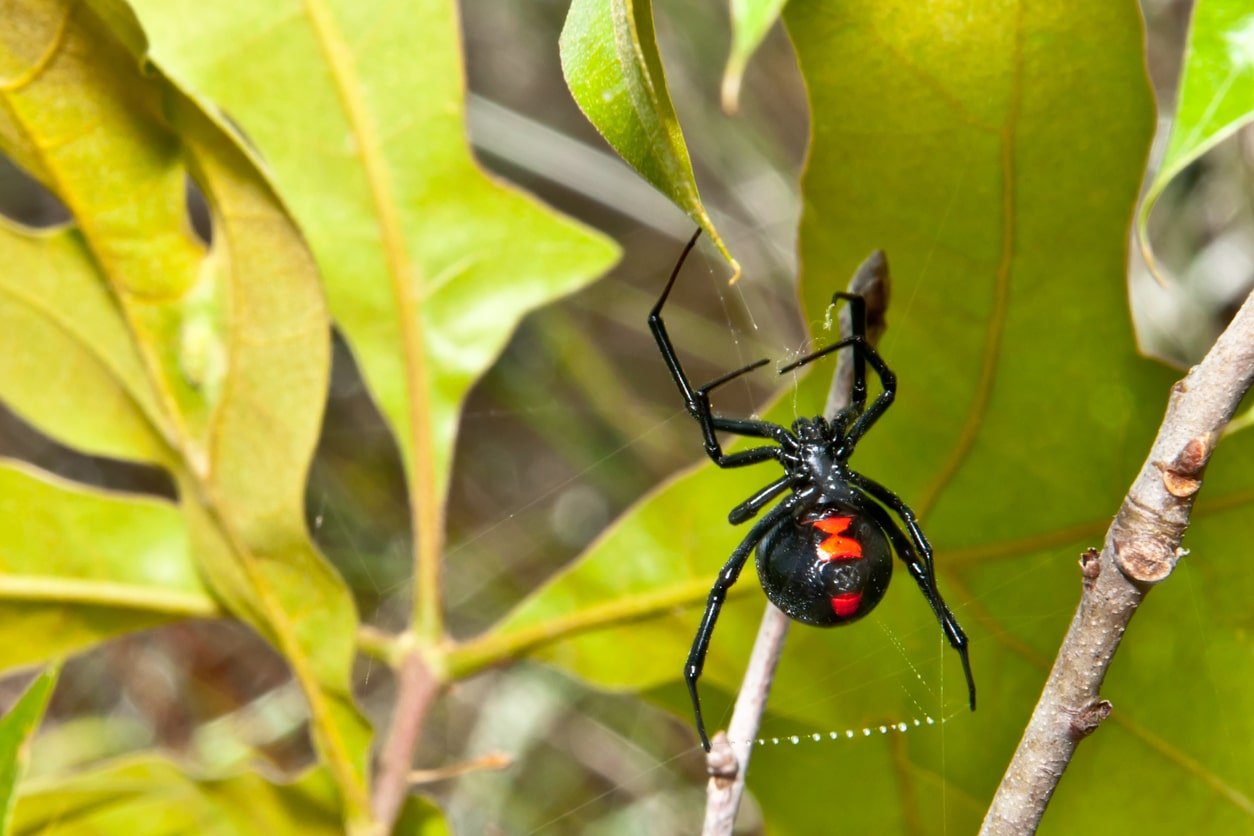20 Must-Know Insects & Bugs In Iowa That Bite & Sting
There are many reasons to visit the state of Iowa. This state boasts a rich history, a vibrant culture, and a diverse landscape. And there’s nothing like a fresh, green Iowa summer to get you enjoying the great outdoors.
But before you go, maybe check out our list of insects and bugs in Iowa that bite and sting. Some of these critters below may be harmless, but others can pack a real punch.
Maybe you’re thinking of camping in Iowa during the summer months. Or perhaps you’re planning on spending some time at a lake cottage for the weekend. Whatever your plans are, here’s what you need to know about the insects and bugs in Iowa that bite and sting!
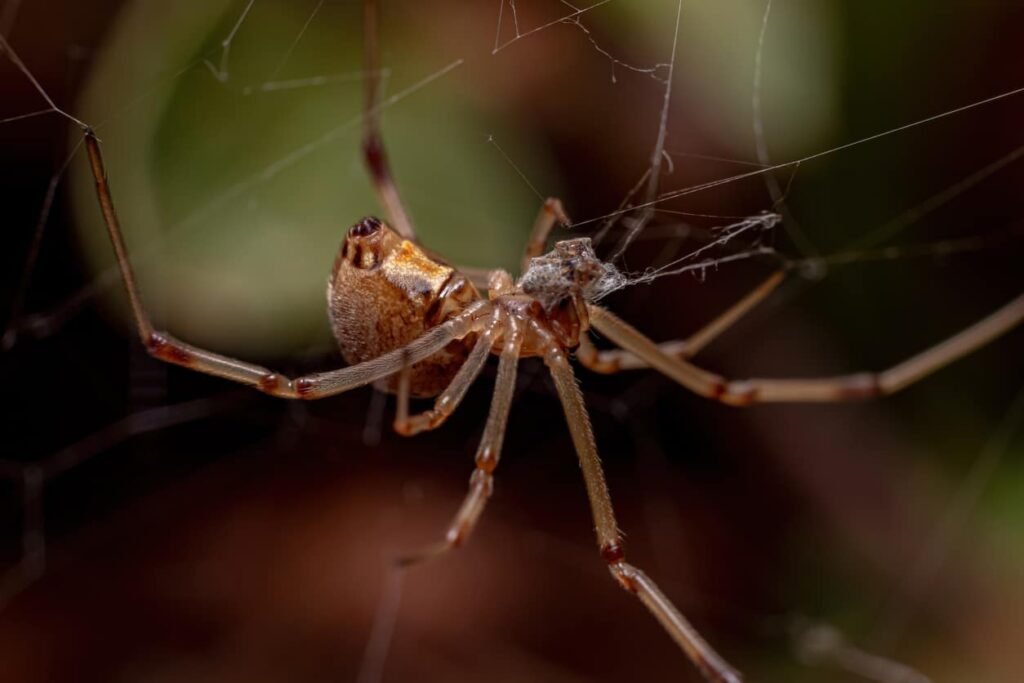
20 Insects & Bugs In Iowa That Bite and Sting
1. Ambush Bugs
Ambush bugs have enlarged forelegs that resemble praying mantises in form. They sometimes have patterns that serve as camouflage against the blooms in which they hide, or they may be dark in colour. Ambush Bugs are most commonly found in wooded areas where there’s plenty of trees or shrubs to hide behind while they wait for their prey to pass.
The ambush bug has a painful bite that may cause swelling, itching, and pain. If you get bitten by an ambush bug, it’s essential to wash it with soap and water immediately. However, if you are concerned about your reaction to the bite, you should contact your doctor for advice about what to do next.
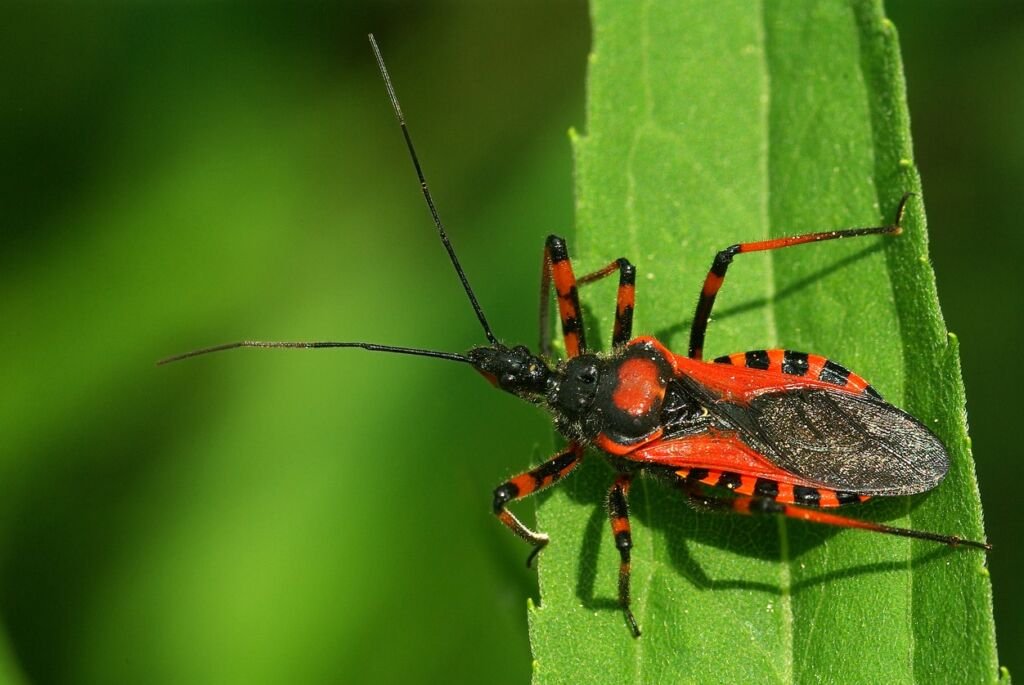
2. Agapostemon Sweat Bee
The agapostemon is a shiny green or blue bee with vivid colours. They range in size from 0.3 to 0.6 inches long, and some have a vibrant metallic green head and body with a black and yellow patterned abdomen. These bees are most commonly found in Iowa’s meadows, fields, gardens, and trees. They make their nests in holes in hollow stems of plants such as vines or willows.
The sting of this bee can be painful. You might experience swelling, redness, and itching around the wound site. To treat a sting from an agapostemon sweat bee, wash the area with soap and water, then apply ice or cold packs to reduce swelling and pain. Call your doctor immediately if your skin starts to swell or tingle after you’ve been stung by one.

3. Bark Centipedes
Bark Centipedes are long, brown centipedes with flattened bodies that are usually dark brown but may also be black or grey. These centipedes can grow up to two inches in length and are one of Iowa’s most common household pests.
These common Iowa insects are typically found in moist, dark areas inside your home. They prefer to live under rocks or logs outside but will enter homes through cracks in foundations or windowsills.
While these centipedes do not threaten humans or pets unless provoked, they can sometimes sting when handled carelessly. The sting may cause irritation, swelling, pain, itching, redness, and blisters. However, if your symptoms persist or worsen, it’s best to see your doctor immediately.

4. Cockroaches
Cockroaches are insects that are often found in kitchens and bathrooms. They are reddish-brown, have two long antennae, and are nocturnal insects and prefer to live in dark places such as basements, crawl spaces, and sewers where there is little light exposure. They also like to live near water sources where they can find food easily by scavenging trash cans or dumpsters.
The bite of a cockroach is minor but can cause some irritation. If you are bitten by one, there’s no need to worry because it shouldn’t spread disease or poison you with its bite. But if you have an allergic reaction, you should consult your doctor for treatment options as this can cause anaphylactic shock, which can be very serious if not treated quickly enough.
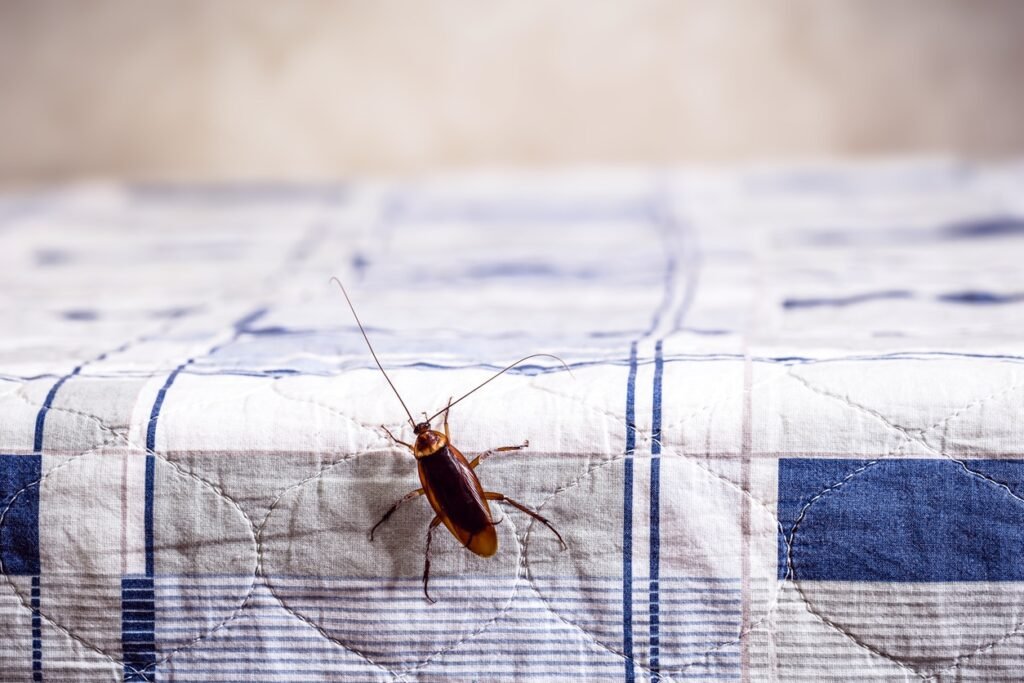
5. Carpenter Ants
Carpenter ants are usually between 1/8 to ¼ inches in length. They have a narrow, reddish brown or black body with a large head and long bent antennae. These bugs in Iowa can be found in almost any outdoor space, in trees, on buildings, or on the ground. They can be found in dead trees or stumps, under patio slabs, and cracks in concrete foundations, decks, eaves, and window frames.
The bite of a carpenter ant looks like a pinprick with a minor swelling around it. It may also look like little bumps on the skin that turn into blisters. The pain will go away within hours, and the bite can be treated with over-the-counter medications such as hydrocortisone cream or calamine lotion to help relieve itching and swelling. But if you’re allergic to insect bites or stings, you’ll need to see a doctor for treatment as soon as possible.

6. American House Spider
The American House Spider is one of the most common bugs in Iowa. These spiders are usually dark brown or grey with a pattern of dark spots on the abdomen. It’s an excellent climber and can live throughout the house, including ceilings, walls, garages, corners and basements. They are also usually found near windows or doors where they can catch flies and other insects for food.
A house spider bite can be painful, but it shouldn’t be dangerous to humans. However, it can cause itching and inflammation at the bite site for a few days afterwards. The bite can usually be treated by applying an ice pack or cold compress for about 10 minutes. You only need to worry about being bitten if you are allergic to its venom.

7. Arrowhead Orb Weaver Spiders
An Arrowhead Orb Weaver spider has a triangular-shaped abdomen, which is white, cream-coloured, or brilliant yellow, contrasting with its light brown, orange, or reddish body. This spider’s legs have multiple darker stripes and are also brown, orange, or reddish.
Arrowhead Orb Weaver spiders are one of the most common insects in Iowa and are typically found in moist, shady areas like woodlands and forests or in basements and sheds.
The bite of an Arrowhead Orb Weaver Spider is characterized by redness, itchiness, swelling, and pain. If you have been bitten by one, cleaning the area with soap and water is crucial before applying any ointment or cream over the affected skin area. However, it is best to seek medical attention immediately if the symptoms don’t disappear.
8. Ticks
Ticks live throughout Iowa, and they can be brown or black. Their body is flat, and their legs are thin, and they tend to live in wooded areas with lots of brush and tall grasses. They are also most abundant in the western part where grasslands are prevalent. These common Iowa bugs prefer moist habitats with lots of shade, but also can live near homes, yards, parks, and recreational areas.
Tick bites can be painful and may cause itching several days after being bitten. The issue is tick bites can cause diseases so you should be especially wary of any tick bite.
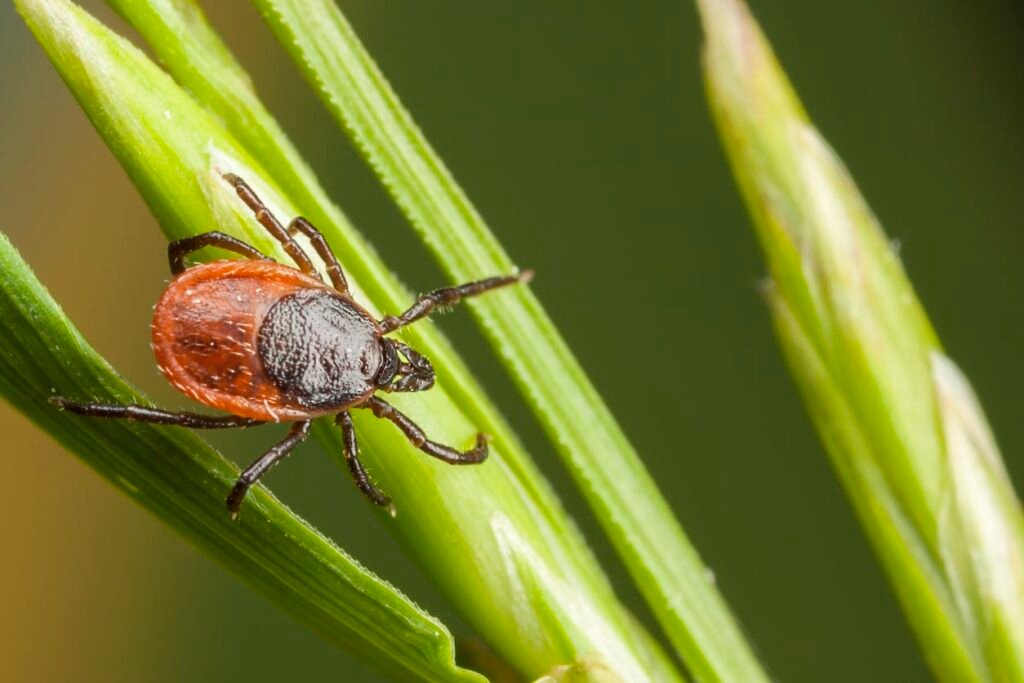
9. Stag Beetles
Stag beetles are big, have large jaws, orange heads and legs. They can be found in forests, woodlands, and near the edges of fields. The adults are often seen at night on flowers or tree trunks.
The bite from a stag beetle is relatively mild compared to other Iowa insects like bees or wasps. There should be no severe side effects from being bitten by a stag beetle, although some people may experience swelling and itching around the bite area. There is no need to cure this type of insect bite or sting because it is not harmful.
10. Bald-Faced Hornet
The Bald-Faced Hornet is a giant yellow and black wasp that gets its name from the white markings on its face. Bald-Faced Hornets are most commonly found in Iowa in areas close to water, such as ponds, lakes, rivers, streams, and wetlands. They are usually found in nests made of chewed plant material. They can be found hanging from branches or underneath leaves in wooded areas.
The sting from a Bald-Faced Hornet looks can swell up and develops into an ulcer. It may also cause nausea and vomiting. A person stung by one of these insects should seek medical attention as soon as possible because the sting can be fatal if left untreated.

11. Crab Spiders
Crab spiders are named because they have a body shape similar to crabs, with their front legs more extended than the other legs. These spiders are prevalent in Iowa because they live in all sorts of environments, including forests and fields, yards and gardens. You’ll often find them hanging out on tree trunks or fence posts during the daytime when they’re looking for food.
The bite of a crab spider is not very painful. But it can cause a mild burning sensation on the skin, albeit this is rare and goes away quickly. The bite may cause swelling around the area where it happened over time if left untreated. If your symptoms don’t go away within a few days, we recommend seeing a doctor for further evaluation.
12. Bumblebees
Bumblebees are found all over Iowa and look similar to honey bees. They are hairy, black, and have a yellow or white band on their abdomen and thorax. They prefer open spaces such as meadows and woodlands with lots of flowers for pollination.
Their sting can be painful and cause swelling, redness, itching, and pain for up to 24 hours. If you get stung by a bumblebee, wash the area with soap and water immediately, and apply ice packs to reduce the pain. If the swelling worsens after 24 hours or you’re allergic to bees, you should see your doctor straight away.

13. American Oil Beetles
The American oil beetle is a black and dark blue beetle found in Iowa. They range from 7 to 30 mm long and have a soft abdomen covered in overlapping plates on the back. They live under stones or rocks and in piles of loose dirt or leaves – you can also find them around homes and gardens.
The bite of an American oil beetle looks like a hard bump on your skin. It may swell up and become red, as well as start itching or burning. The bite should be fine unless it becomes infected. If this happens, visit your doctor for advice on how to treat it properly.
14. Bed Bug
Bed bugs are small, flat, oval-shaped insects that are brown. They can be found in hotels, motels, college dorms, and apartments. In particular look out for them in the mattress, box spring, headboard, bed frame, and other furniture cracks and crevices.
Their bite looks like a small red bump that may itch for several days afterwards. It shouldn’t cause any severe problems unless you have allergies, which could lead to an allergic reaction and swelling around the area where you were bitten. It’s best to consult your doctor immediately if symptoms occur.

15. Spotted Bird Grasshopper
A Spotted Bird Grasshopper is a brown insect with black spots on its back. It has a long, slender body, large eyes, and wings. These Iowa bugs are often found near ponds or marshes with rotting vegetation. They like to live near water because it helps them survive the winter months when there is not enough food available for them to eat.
Their bite is similar to that of other common grasshoppers. It doesn’t hurt much and only lasts for a few seconds before fading away. Just watch our for infections.
16. Mosquitoes
Mosquitoes are small flying insects that are found in Iowa as well as almost everywhere in the world! They can be found almost anywhere, but they especially like to hang out around lakes, ponds, and other bodies of water. These common Iowa bugs are also known to breed in standing water collected on the ground, such as puddles or ruts left by rainstorms.
The bite of a mosquito looks like a small red bump that can turn into a painful and itchy spot. The bites usually disappear after a few days, but sometimes they may leave scars behind them. Mosquito bites need not usually be treated because they are not dangerous for humans and other animals.

17. Black Widow Spiders
Black Widow Spiders are one of Iowa’s most common and dangerous spiders. They have a glossy black body with a red or orange hourglass-shaped marking on the underside of their abdomen. They’re found in Iowa in woodpiles, sheds, and other places where they can access insects to feed on.
These dangerous Iowa bugs can also be found in barns, garages, sheds, basements, crawl spaces, and outhouses.
The venom of Black Widow Spiders contains neurotoxins that affect the nerve cells and can cause muscle spasms, tremors, and paralysis. It can also cause abdominal cramping, sweating and nausea, and vomiting. If a widow spider bites you, you should seek medical attention immediately.
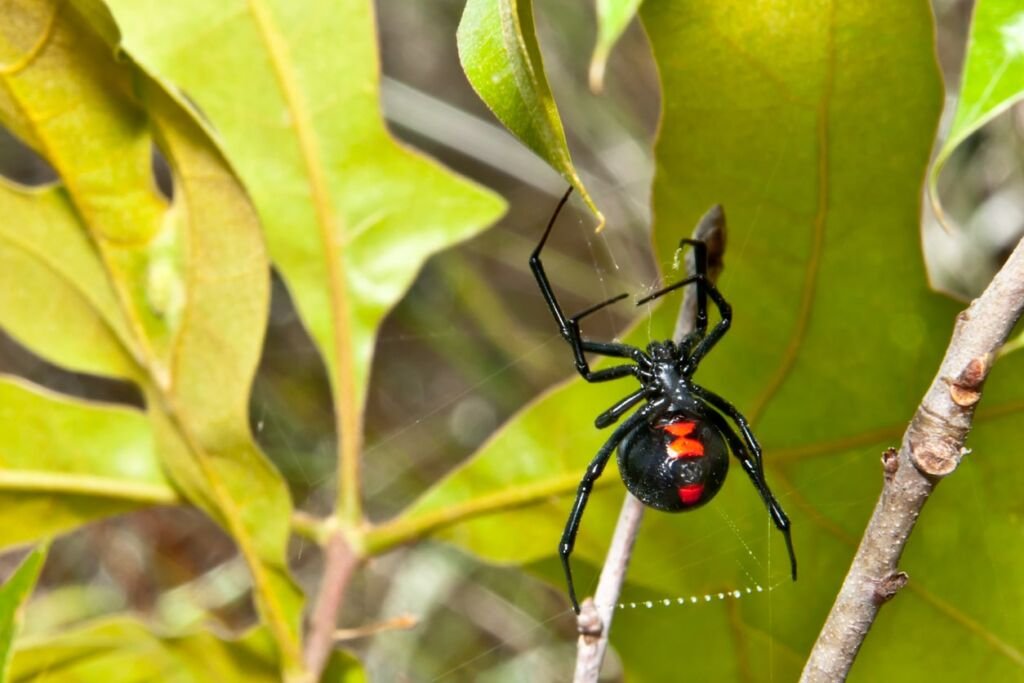
18. Yellow Jacket Wasps
Yellow jackets are wasps that come in various colours, but the most common colours are black and yellow. They have yellow-and-black stripes on their abdomens and often build their nests underground, so they’re unlikely to be found hanging around your house, but they can also be found in attics and wall voids.
The sting of a yellow jacket may cause swelling, redness and itching in the area where they were stung. It may also cause pain or irritation. You will experience more severe symptoms like nausea, vomiting and dizziness if you are allergic to it. The sting of a yellow jacket wasp does not need to be cured, but you should visit your doctor immediately if you experience an allergic reaction.

19. Fleas
Fleas are tiny insects with a flat body that is covered with hair. They are usually black or brown and about the size of a pinhead. Fleas can be found all over Iowa, even in your own home. Fleas are typically found on pets such as dogs or cats but can also be found on humans.
The flea’s bite or sting looks like a small red bump on your skin. The bites aren’t painful at first, but they can become itchy and painful if you scratch them too much. If fleas have bitten you, there is no need to worry. The bites do not need to be cured. Wash the bite area thoroughly. The itching will go away after a few days.

20. Minute Pirate Bugs
Minute pirate bugs are small, black insects with long beaks and wing patches. These bugs in Iowa are found all over the United States and live in woody areas and feed on plant sap. They are often found on vegetation such as trees, shrubs, and weeds. These insects also live under rocks, logs, or bark.
The bite of these bugs looks like a red spot with two white lines. The site can become itchy if scratched off too much, so you should be careful not to scratch your skin once you have been bitten or stung by one of these bugs. The insect bite does not need to be cured as it will go away without treatment.


